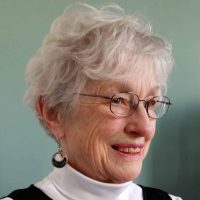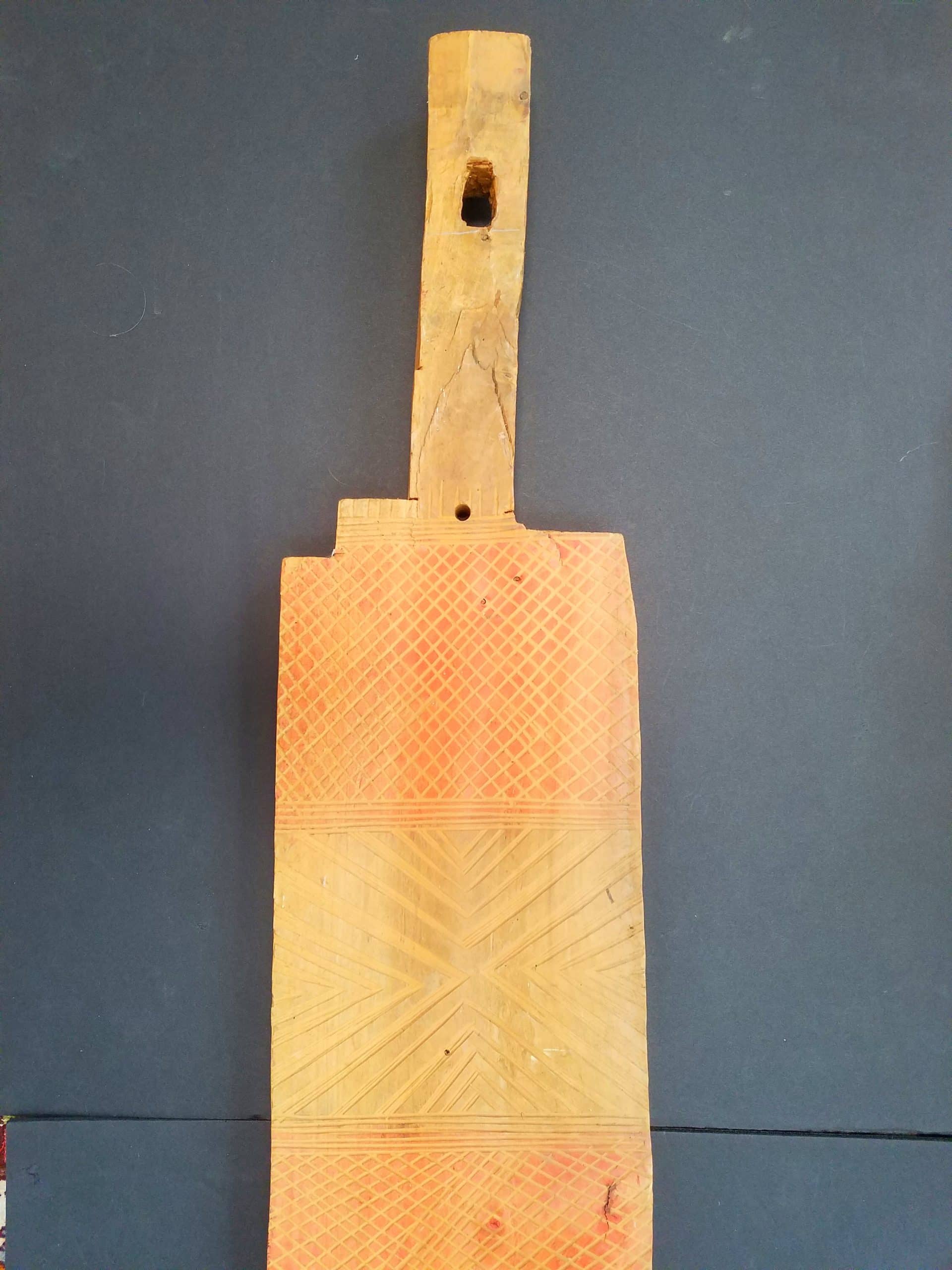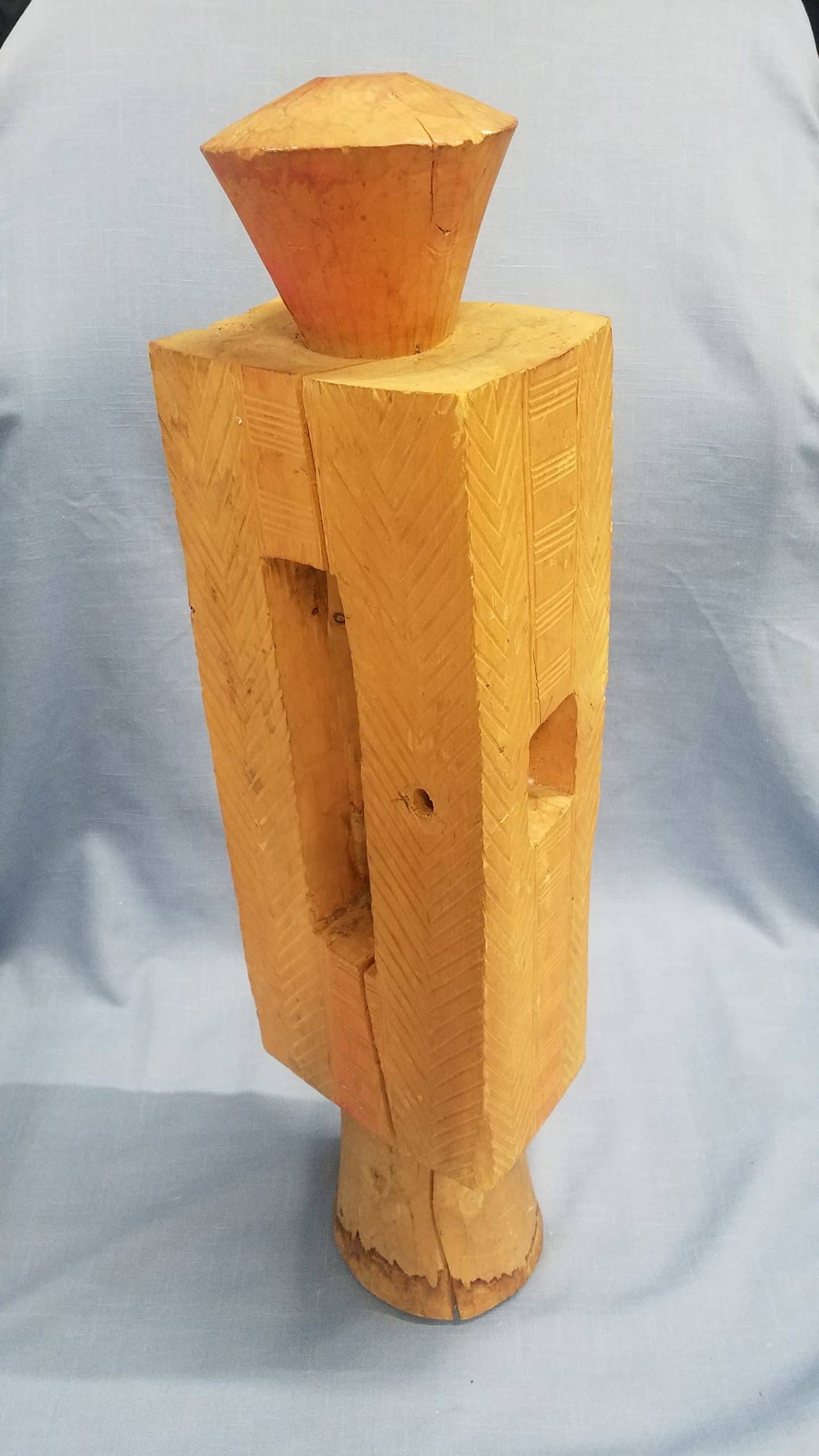We entered our mountain town in oromiya one evening as part of Peace Corps’ third wave of 300 volunteers, most of them arriving to teach English throughout the cities and villages of Haile Selassie’s empire. Light bulbs glowed dimly through windows as we entered Asebe Teferi in the Peace Corps doctor’s Land Rover. The doctor turned left behind Dejazmatch Wolde Gabriel aba Seitan secondary school, then passed a grove of coffee trees and a shepherd’s one-room house.
A grazing cow moved aside as we drove up to our new home. Our headlights revealed the white walls and corrugated tin roof. The walls were built of rough-hewn eucalyptus, stuffed with straw and a blend of mud and dung, finished in whitewash. The appearance was punctuated by seven cheerful blue wooden shutters and four doors. It was a large house, but rented for us by the Peace Corps doctor— the only vacancy in town.
We quickly filled the living room with furnishings from the local market, including large horsehair rugs, a three-legged wooden stool from far-off Jimma, and two handmade beds built by our night guard. The creaky beds were too small for the two of us. We chose to sleep on a large mattress over two steel Peace Corps-issue single beds in a small bedroom with a view across the valley. At night, we listened to the shepherd’s flute next door, and closed the shutters to keep out a feral cat and the jibbering of hyenas that prowled within our compound. The two steel beds were almost the width of the bedroom, so we began each day by crawling to the foot of the bed to emerge through one of our blue doors.
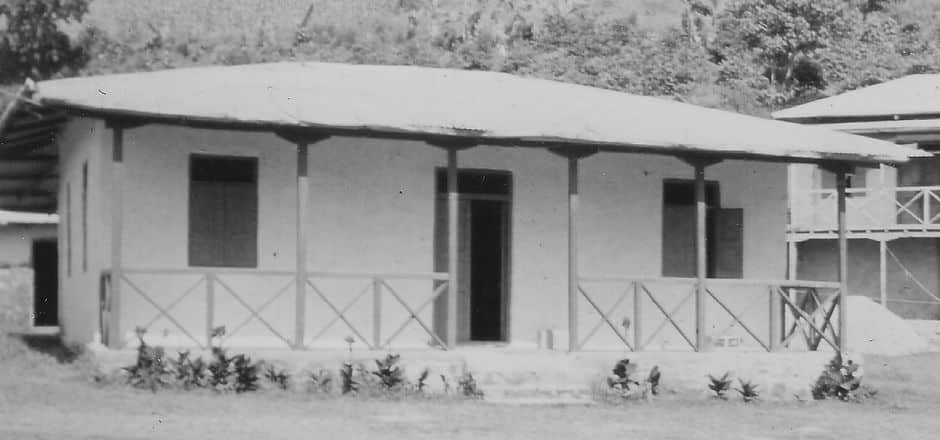
Our house became a gathering place for faculty, parties of visiting Peace Corps volunteers, and a hillside of neighbors. Overnight guests included development workers from France, Sweden and the UK, the occasional wildlife conservationist, and the Peace Corps doctor who drove up the Amhar Mountains to bring us a cooler of ice cream, along with stool sample kits for us to fill so he could assess our health.
After school and on weekends our home was surrounded by curious and eager students. They were a diverse group of Amharas, Somalis, Oromos, Gurages, Egyptians and a few with Greek, Armenian, Italian, or Turkish backgrounds. We offered a room in the back of our house to two older students, both named Mohammed. The Mohammeds became our trusted guides, interpreters and counselors on Ethiopia’s customs and complexities. As school exams approached, we heard them discussing class notes with friends while they chewed khat (a stimulant) and studied late into the night.
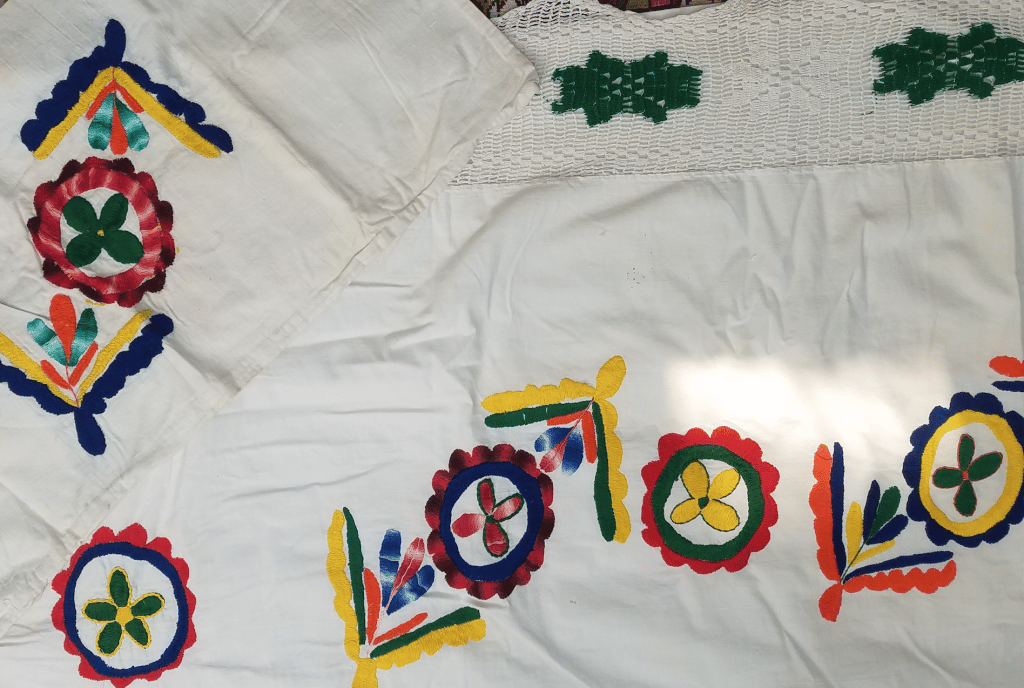
When we were teaching, 15-year-old Amina cooked, shopped and swiped a broom at neighborhood chickens that chirped and pecked in our house when we were away. Amina embroidered flowers on a pillowcase with an Amharic monogram—“Mrs. Arnold”—and a cotton bed-spread as a gift for us. The spread fit on our utilitarian metal bed and was also the right size for the hand-crafted Ethiopia bed we ended up bringing home.
Late in our second year, we ran into Nancy and David Levine, volunteers teaching in remote Emdeber. They told us about large beautiful beds carved by Menji, a gifted Gurage artisan. We ordered a bed sight unseen. The Peace Corps put it in our sea freight and delivered it to Courtney’s home in Liberty, Missouri. When we got home months later, we discovered the perfect Ethiopian souvenir: four bed posts, two sides and head and foot made of the light-yellow hard wood of a zigba tree. Half a century later it retains the radiance of the natural dyes in Menji’s unique geometry.
Our bed has traveled to five different homes where we’ve lived. Wherever there was space to set it up, our guests slept in it. When we lived in Ohio David removed the slats and the custom-cut mattress and created a stand-up desk to write his early-morning news reports for the Sandusky Register newspaper. Over the years whenever David and I had room to assemble the puzzle of posts and sideboards of Menji’s bed, we would sleep and dream about our life in Ethiopia.

